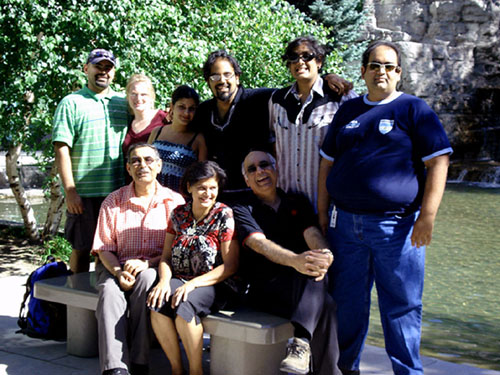 The People’s Partnership Agreement under which five distinct elements of interests have been brought together on a common platform against the incumbent People’s National Movement (PNM), marks an evolution in the complex politics of Trinidad and Tobago.
The People’s Partnership Agreement under which five distinct elements of interests have been brought together on a common platform against the incumbent People’s National Movement (PNM), marks an evolution in the complex politics of Trinidad and Tobago.It’s been almost 30 years since our first openly declared experiment with coalition politics when the ULF, Tapia and the DAC created a political accommodation under the umbrella of the National Alliance.
The process, which began with the Alliance accommodation and eventually culminated in the Party of Parties of the National Alliance for Reconstruction (NAR), is well-documented in "A Party Politics For Trinidad and Tobago, Flowering of An Idea by Lloyd Best and Allan Harris".
Echoes of the new People’s Partnership ring out from the statement by Alloy Lequay, Convenor of the Tri-Party Talks as he announced in March 1981 that the DAC, Tapia and ULF had reached agreement on the basic principles of a foundation strategy:
- The DAC, Tapia and the ULF will in no circumstances contest against one another in any constituency in the forthcoming general elections
- Whichever of the three parties is contesting a given constituency will receive maximum support and collaboration from the other two
- The DAC, Tapia and the ULF will collaborate in a programme of voter registration aimed at heightening voter interest and at assisting voters in securing their rights
- The DAC, Tapia and the ULF will also be working together on a wider basis in preparation for the elections
In the event, when the election bell rang in 1986, key players threw caution to the wind and buried their differences in the shotgun wedding of the NAR, from whose ruins their progeny are only now beginning to emerge.
In spelling out the case for coalition politics through a party of parties, Best argued for the validation of rivalry and competition as necessary conditions of representation:
“It is only the organized rivalry between Caroni-Naparima, Tobago and the rest of the country which will make it possible to govern wisely. It is the bargaining between them which will allow our cabinet to order priorities between agriculture and industry, between big business and small business, between country and town, between Central Government and County Council.
"It is indeed only the rivalry between leaders and constituent parties that will make it possible to root out corruption…
"It is the jealousy between constituent parties which will make it impossible for any Prime Minister to go on ineffectually for donkey’s years. It is certainly not the half-formed intentions of second-rate ambition.
"Wherever there are rivals of equal stature, Parliamentary Leaders are brushed aside the moment they begin to falter so that if one survives for 25 years there hangs a tale not so much about him as about his rivals and the conditions surrounding their existence….
"What we therefore need is not a change of faces but a new approach to party politics. We must create national parties that could present us with the coalitions needed to restrict corruption and immorality, to restrain one-man rule and, above all, to select the correct priorities in policies, programmes and projects.”
Eight months later, Best presented his landmark socio-political description of Trinidad and Tobago, loosely referred to by some as the “Nine Tribes of T&T” in a presentation to the Alliance Inaugural Convention of November 14, 1981 titled: “Alliance For Reconstruction: The Case”.
Importantly, the People’s Partnership brokered a couple of weeks ago by the UNC, TOP, COP, NJAC, and MSJ steps away from the detritus of the NAR in taking coalition politics back to something approximating the foundation strategy of 1981.
What is different, however, is the Partnership’s embrace of McLeod’s MSJ and Daaga’s NJAC as key interests not as parties.
The opposition platform is now a political hybrid, being both a party of parties and a party of interests. The development is worth noting as an evolution towards a national party of declared and defined interests.
But the path between here and there is long and treacherous - which makes mechanisms and processes for policy and decision-making both urgent imperative. Wise leadership would know that the situation is fraught.
Danger already lies in the extent of expediency that would have been forced upon the partners as a result of the limited campaign time in this snap election.
The bigger challenge, however, will come if, and when, the emerging consensual culture of coalition clashes with the entrenched culture of maximum leadership which has defined the role of the prime minister in our variant of the Westminster system.
In such a scenario, the need for Constitution reform will be thrown into dramatic relief.
In 1986, we lost our innocence as Panday counted its cost at the hands of Robinson. No one could be so innocent now. The records are there to enlighten anyone interested in understanding the spectacular implosion of the NAR.
More relevant to today’s political reality, they are there to guide – and to warn - the present as it prepares to shape the future.
Sunity Maharaj.
(For more on Sunity's writings, news and commentaries please visit The Trinidad and Tobago Review)



No comments:
Post a Comment